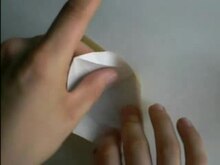摺紙的藝術
KATHLEEN MASSARA
摺紙是一種古老的藝術,其歷史可以追溯到幾千年前,但至今仍被全球各地的許多人喜愛。無論作品簡單還是複雜,精確是摺紙的關鍵,不過,熱情和堅持也很重要。
折り紙(おりがみ、折紙)とは、紙を折って動植物や生活道具などの形を作る日本伝統の遊びである。また、折り上げられた作品そのものや、折り紙用に作られた正方形の専用紙、千代紙などのことを指す。上級武家が和紙で物を包むために用いていた折形、折 ...
Origami is the art of paper folding, which is often associated with Japanese culture. In modern usage, the word "origami" is used as an inclusive term for all folding practices, regardless of their culture of origin. The goal is to transform a flat ...
Origami (折り紙, Japanese pronunciation: [oɾiɡami] or [oɾiꜜɡami], from ori meaning "folding", and kami meaning "paper" (kami changes to gami due to rendaku)) is the art of paper folding, which is often associated with Japanese culture. In modern usage, the word "origami" is used as an inclusive term for all folding practices, regardless of their culture of origin. The goal is to transform a flat square sheet of paper into a finished sculpture through folding and sculpting techniques. Modern origami practitioners generally discourage the use of cuts, glue, or markings on the paper. Origami folders often use the Japanese word kirigami to refer to designs which use cuts.
The small number of basic origami folds can be combined in a variety of ways to make intricate designs. The best-known origami model is the Japanese paper crane. In general, these designs begin with a square sheet of paper whose sides may be of different colors, prints, or patterns. Traditional Japanese origami, which has been practiced since the Edo period (1603–1867), has often been less strict about these conventions, sometimes cutting the paper or using nonsquare shapes to start with. The principles of origami are also used in stents, packaging and other engineering applications.*[1] [2]


沒有留言:
張貼留言